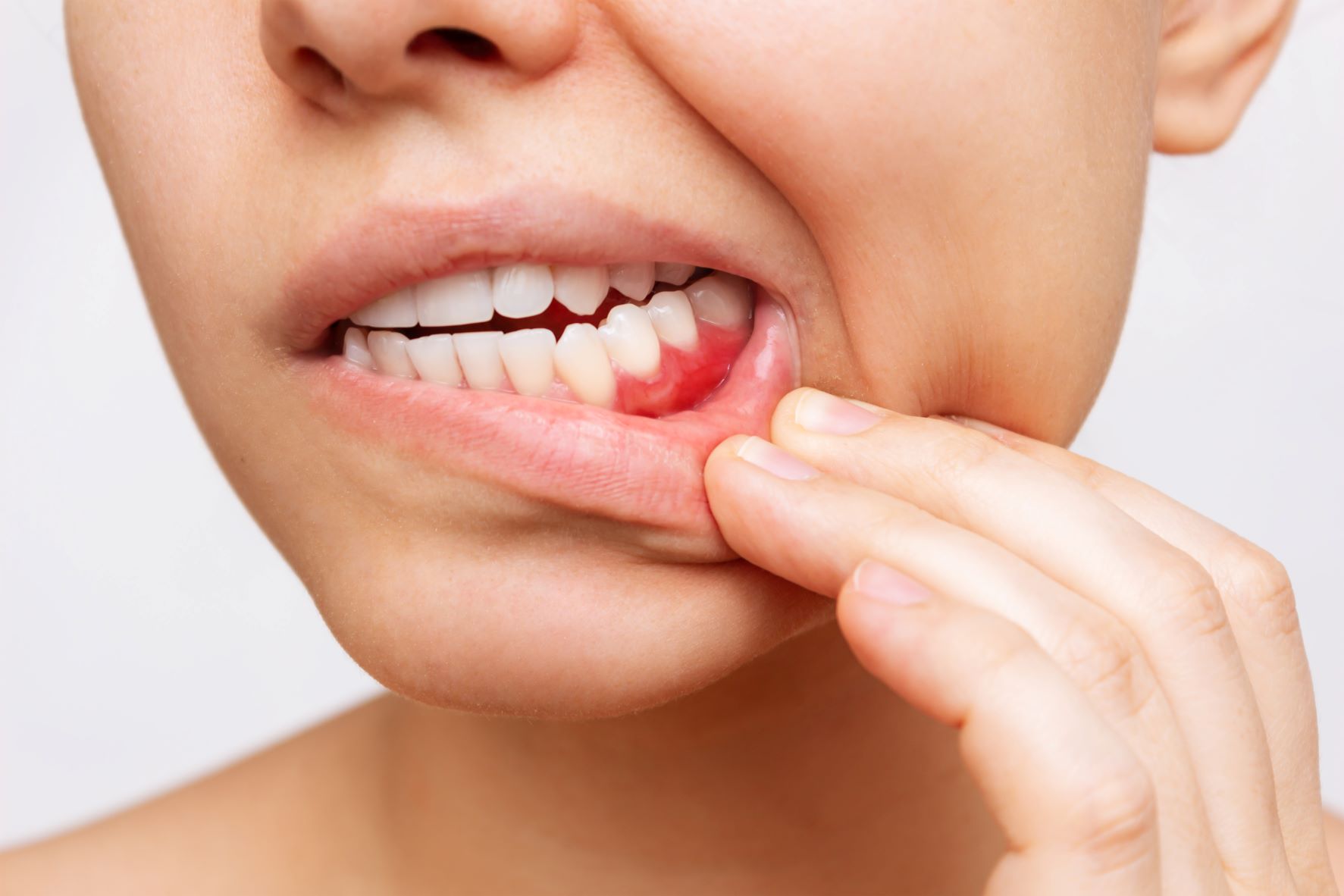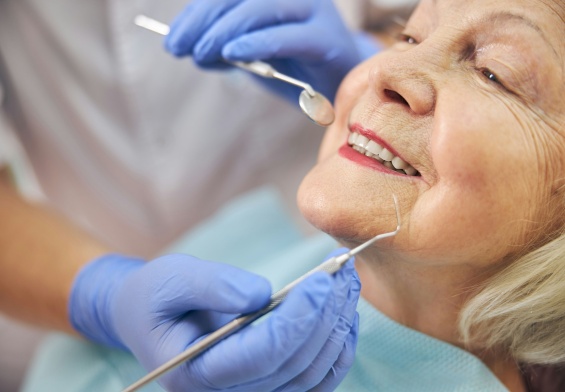When people think about their smile, they often think of the aesthetic parts of it. While the aesthetics of your smile are important, they cannot be addressed if you lack proper oral health. If you are looking to transform your smile through the use of dental implants and you suffer with periodontal issues, there are steps you must take first to ensure the success of the implants.
What is periodontal disease?
Periodontitis is caused primarily by infections and inflammation of the gums and bone that surround and support the teeth. In its early stages, known as gingivitis, the gums can become swollen, red, and bleed. Periodontitis is a more serious form of gum disease in which the gums pull away from the tooth, bone is lost, and teeth loosen or fall out. Adults are more likely to develop periodontal disease. The two most serious threats to dental health are periodontal disease and tooth decay.
While you may feel embarrassed to have periodontal disease, it is actually more common than you may think. A recent report released by the CDC revealed that 47.2% of adults 30 years or older in the United States suffer from some form of periodontitis and as we get older the likelihood of periodontal disease increases, which is shown through the statistic that 70.1% of adults 65 years or older deal with periodontal disease. Periodontal disease is also more common in men than women (56.4% versus 38.4%), those who live below the federal poverty level (65.4%), those with less than a high school diploma (66.9%), and smokers (64.2%).
What causes periodontal disease?
The most common cause of gum disease is plaque, which is a thick film of bacteria that forms on the gums and teeth that can be removed by daily brushing, flossing, and rinsing. If not removed, plaque can begin to build up and harden into tartar, which can only be fully removed by a dental health professional. Although plaque is the main reason that some develops periodontal disease, there are a lot of other reasons that someone may develop gum disease:
- Smoking and chewing tobacco: Tobacco use disrupts the normal function of gum tissue cells, making your mouth more susceptible to infections such as gum disease. Tobacco chewing isn’t any better. Stop smoking and help prevent a variety of health problems, including gum infection.
- Hormonal shifts in females: Hormones rise and fall during pregnancy and monthly menstrual cycles, making gums more susceptible to gum disease. Expecting a baby does not automatically mean you will have gum or tooth problems; it simply means you will want to take extra care of your mouth during this time to maintain your oral health. When brushing or flossing, your gums may become inflamed, irritated, puffy, red, or bleed slightly during pregnancy. If you have these symptoms, know that they usually go away after pregnancy, but you should still consult your dentist and doctor if you have any questions.
- Prescription medications: Some medications may have side effects that reduce saliva production and flow, resulting in a dry mouth that allows bacteria to spread more easily. If you’re worried about your gum health, talk to your doctor about your prescription medications.
- Nutritional deficiencies: It’s difficult to get all of your daily vitamins, but a lack of vitamin C may be especially harmful to your gums. A diet that is high in sugar and carbohydrates while low in water and vitamin C is a recipe for gum disease. Drink plenty of water and eat a well-balanced diet high in vitamin C to help prevent gum disease.
- Crooked teeth: Teeth commonly overlap, become crooked, or rotate. A crowded mouth, on the other hand, can be a breeding ground for gum disease because misalignments create more spaces for plaque to accumulate and harm your teeth and gums. Brush and floss in those areas more frequently to help prevent gum infection causes such as plaque.
- Family history: Inform your dentist if your family has a history of gum disease, as it may put you at a slightly higher risk of contracting the bacterial infection.
How do you treat periodontal disease?
The treatment you receive it largely dependent on how advanced your periodontitis is. There are both nonsurgical and surgical treatment options for periodontal disease depending on its severity. A periodontist, dentist, or dental hygienist may provide treatment. Periodontitis treatment aims to thoroughly clean the pockets around teeth and protect the surrounding bone. You have the best chance of success if you also practice good oral hygiene on a daily basis, manage any health conditions that may affect your dental health, and quit smoking.
Nonsurgical treatments
If your periodontitis is mild, treatment can involve less invasive procedures:
- Scaling: Scaling removes tartar and bacteria from the surfaces of your teeth and beneath your gums. It could be done with instruments, a laser, or an ultrasonic device.
- Root planing: Root planing removes bacterial byproducts that cause inflammation, delay healing, or cause the gums to reattach to the tooth surfaces while also smoothing the root surfaces to prevent further tartar and bacterial buildup.
- Antibiotics: Bacterial infection can be controlled with topical or oral antibiotics. Topical antibiotics can include antibiotic mouth rinses or the placement of antibiotic-containing gels between your teeth and gums or into pockets after deep cleaning. Oral antibiotics, on the other hand, may be required to completely eliminate infection-causing bacteria.
Surgical treatments
If your periodontitis is advanced, your treatment plan may require dental surgery by a professional periodontist:
- Pocket reduction surgery (flap surgery): Your periodontist will make tiny incisions in your gums to lift back a section of gum tissue, exposing the roots for more effective scaling and root planing. Because periodontitis frequently results in bone loss, the underlying bone may be recontoured prior to suturing the gum tissue back in place. It will be easier to clean these areas and maintain healthy gum tissue once you have healed.
- Soft tissue grafts: Your gumline recedes when you lose gum tissue. Some of the damaged soft tissue may need to be reinforced. This is typically accomplished by removing a small amount of tissue from the roof of your mouth (palate) or using tissue from a different donor source and attaching it to the affected site. This can help to prevent further gum recession, cover exposed roots, and improve the appearance of your teeth.
- Bone grafting: When periodontitis has destroyed the bone surrounding your tooth root, this procedure is used. The graft could be made of small fragments of your own bone, or it could be synthetic or donated bone. By holding your tooth in place, the bone graft helps to prevent tooth loss. It also serves as a platform for natural bone regrowth.
- Guided tissue regeneration: This allows for the regeneration of bone that has been destroyed by bacteria. In one method, your dentist will sandwich a biocompatible fabric between your existing bone and your tooth. The material keeps unwanted tissue out of the healing area, allowing bone to regrow instead.
- Tissue-stimulating proteins: Another method is to apply a special gel to a diseased tooth root. This gel contains the same proteins found in tooth enamel development and promotes the growth of healthy bone and tissue.
Can you get dental implants if you have periodontal disease?
The short answer is no. A dental implant requires healthy, strong gums. Gum disease, as previously stated, weakens and dissolves this tissue and bone. Even if you’ve treated the disease, your gum tissue and jawbone may be too weak to support an implant.
Your jawbone must be thick and wide enough to safely support the implant during an implant procedure. The implant and final restoration must also be completely surrounded by gum tissue. If this is the case, you could benefit from a bone and/or soft tissue graft. Both of these are very common and successful procedures. After the procedure is completed and you have had time to heal, you will most likely be a much better candidate for a dental implant. In fact, because of these and other procedures, very few people are unable to receive implants.
Your risk of developing gum disease does not go away once you have an implant. Without proper care, you may develop peri-implantitis, which is a type of gum disease. Peri-implantitis, at its worst, can cause your implant to fail and fall out completely. If you do develop peri-implantitis, there are treatment options available to stop the disease as well as stabilize and repair your implant.




